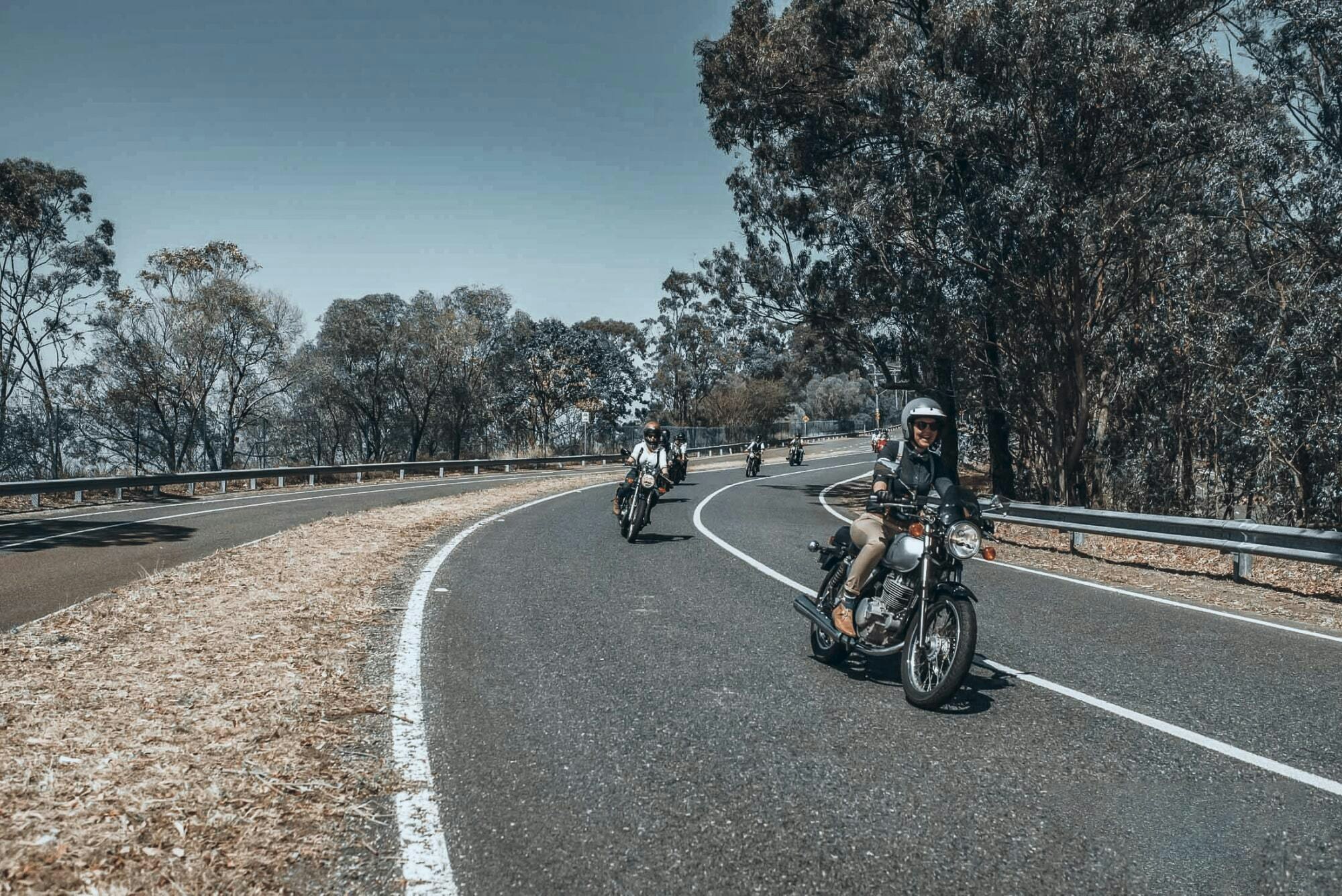Highway riding tips
June 1, 2022 Beyond the bike
Although popular music exhorts riders to get their motors running and head out on the highway, many riders hate highways. They are often straight and boring and packed with right-lane hogs and massive slow-moving trucks. More like a Highway to Hell! Think the Hume, Bruce, Pacific or Newell highways. No way, thanks.
Happily there are many highways that have more curves and attract less traffic. In Australia we are blessed with several great highways to get our motors running such as the Oxley, Gwydir, Bruxner, Mt Lindesay, Omeo, Captain Cook etc. But any highway presents safety issues for riders, whether they are straight and boring, or twisting and interesting.
For the former, the main issues are fatigue and boredom which can result in a lack of attention and easy distraction. The best way to beat these is to stop regularly, hydrate but avoid coffee and consider investing in a helmet intercom so you can listen to music or podcasts.
Since most interesting highways carve through country areas, a major danger is wildlife and livestock. Kangaroos are the number one danger to riders, accounting for 70% of all motorcycle crashes with animals. To avoid wildlife, stick to riding between about an hour or two after dawn and before dusk.
In drought, wildlife will come closer to the roadside for the “green pick” that grows from any rain runoff. Scan the sides of the road regularly for any movement. Don’t just use your eyes … use your nose, too. If you smell roadkill, it means there are more animals about.
Livestock can also be an issue. Be wary of areas where there are no fences to hold livestock back.
As always, dress for the occasion. If you crash at highway speed, jeans and sandshoes will rub away to nothing in a matter of a couple of seconds. While modern textile motorcycle gear is quite safe, nothing beats the abrasion resistance of leather. Before buying, consider checking the Australian motoCAP site to check the crash and abrasion resistance of the gear.

Your gear should also be weather resistant. That means having decent ventilation if you are riding in hot conditions, zip-out liners for cold weather and waterproofing. Nothing makes you a more dangerous rider than being uncomfortable because of heat, cold or being drenched to the bone.
Highway speeds also mean high wind noise which can not only be fatiguing, but also cause hearing loss. At 100km/h the wind noise in your helmet will be louder than a rock concert and after just 15 minutes it is starting to cause permanent hearing loss. Soft-foam earplugs cost about $1 or you can have specially moulded earplugs made for you for about $50.
Straight and boring highways tend to have plenty of traffic and a lot of that is trucks. Riders need to be aware that they can “disappear” in the blind spots of cars and trucks in these conditions. In fact, trucks can even have blind spots right in front of them because of the enormous bonnets on them.
Riders should be aware of this and ride in a position where the driver can see them. If they do overtake, they should do so quickly and always keep a “buffer zone” between them and other vehicles. That could mean moving to the left, right or centre of a lane depending on where the other vehicles are.



While tailgating is the number one peeve for most motorists — motorcyclists included — it is surprising how many riders follow too closely on a highway. Drivers tend to stay further back so they can see the wheels of the car in front over their cars bonnet. However, motorcycles don’t have bonnets, so the natural inclination is to ride closer to the vehicle in front. That’s particularly dangerous at highway speed because contrary to popular opinion motorcycles do not stop as fast as cars.
In fact, a Formula 1 car can brake with up to 5.7g of force while a MotoGP bike has only 1.8g.
Cars also have four tyres on the road with a substantial “footprint” for friction with the road surface under braking, whereas motorcycles only have two tyres which are rounded and have a very small contact patch. So it is vital that you maintain a good 2-3 seconds gap to the vehicle in front.
It's also vital that your brakes are up to standard. Before any highway road trip, you should check your brakes and ensure there is enough “meat” on the pads. Bendix Moto, who are famous for their vehicle brakes also make brake pads for motorcycles.
They produce two motorcycle pad types; sinter or ceramic. Both have low dust, noise and wear characteristics. Ultimate+ ceramic pads have increased feel at low and moderate speeds and are most suited to lighter and more powerful bikes.
Bendix Moto Street Road Track sinter brakes are best suited to highway riding and bigger motorcycles your best bet is sinter pads which have stable friction in all conditions; hot, cold, wet or dry. They also have strong initial bite and low fade even at high temperatures such as heavy braking on a twisting highway such as the famed Oxley.
 Australia
Australia
 New Zealand
New Zealand